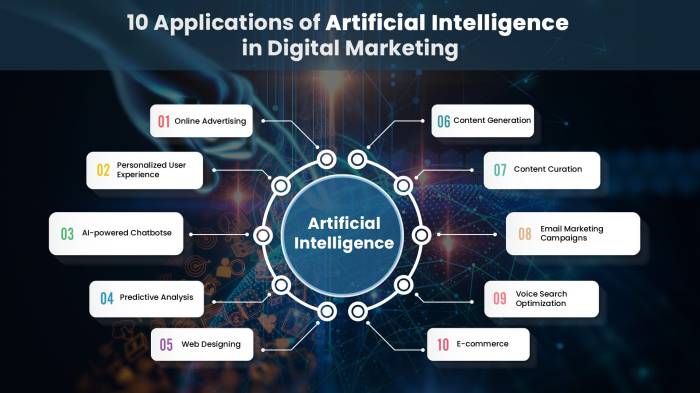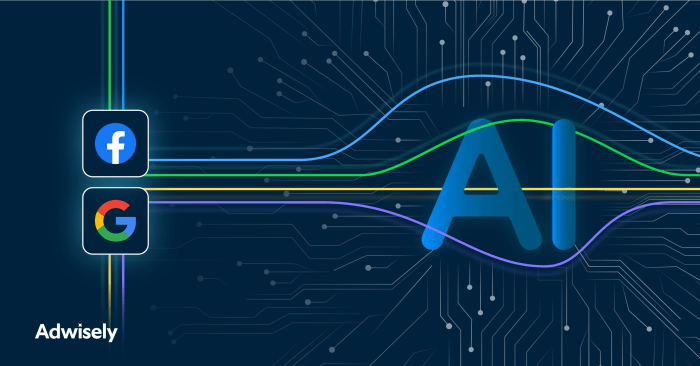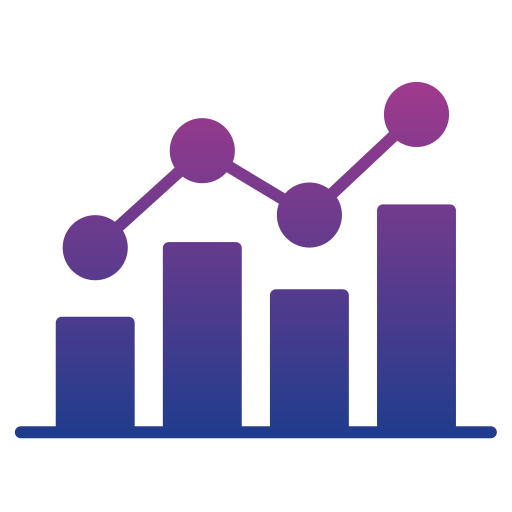AI-powered ad targeting has revolutionized digital marketing, ushering in a new era of personalized and efficient advertising. By leveraging advanced algorithms and data analysis, AI-powered ad targeting allows businesses to reach their target audience with laser-like precision, delivering highly relevant and engaging ads that resonate with individual preferences and interests.
This technology goes beyond traditional targeting methods, which often rely on broad demographics or interests. AI-powered ad targeting analyzes a vast array of data points, including user behavior, online activity, and even social media interactions, to create detailed profiles of potential customers.
This enables advertisers to tailor their campaigns to specific segments of the population, maximizing engagement and driving conversions.
Introduction to AI-powered ad targeting
In the dynamic landscape of digital advertising, AI-powered ad targeting has emerged as a transformative force, revolutionizing the way advertisers reach their target audiences. This evolution has been driven by the increasing volume of data generated online and the need for more sophisticated targeting strategies to ensure campaign effectiveness.Traditional ad targeting methods, such as demographic targeting and contextual targeting, relied on limited data points and often resulted in broad reach with minimal personalization.
AI-powered ad targeting leverages advanced algorithms and machine learning to analyze vast amounts of data, creating a more comprehensive and nuanced understanding of user behavior and preferences.
Benefits of AI-powered ad targeting
AI-powered ad targeting offers significant benefits for both advertisers and consumers, leading to more efficient campaigns and improved user experiences.
Benefits for advertisers
- Increased campaign efficiency:AI algorithms optimize ad spend by targeting the most receptive audiences, reducing wasted impressions and maximizing return on investment (ROI).
- Improved targeting accuracy:AI-powered systems analyze multiple data points, including browsing history, purchase history, and social media activity, to create detailed user profiles, resulting in highly targeted ads.
- Enhanced campaign performance:By delivering relevant ads to the right audiences, AI-powered targeting drives higher click-through rates (CTR), conversion rates, and overall campaign effectiveness.
Benefits for consumers
- Personalized experiences:AI-powered ad targeting delivers relevant and engaging ads based on individual preferences, enhancing the overall user experience.
- Reduced ad fatigue:By targeting only interested users, AI-powered systems minimize the display of irrelevant ads, reducing ad fatigue and improving user satisfaction.
- Discovery of new products and services:AI algorithms can introduce users to products and services they might be interested in but haven’t yet discovered, expanding their horizons and providing valuable insights.
Real-world applications of AI-powered ad targeting
AI-powered ad targeting is being implemented across various industries, demonstrating its versatility and impact.
E-commerce
E-commerce companies leverage AI to target users based on their browsing history, purchase history, and product preferences, delivering personalized recommendations and driving sales. For example, Amazon uses AI to suggest products based on past purchases and browsing behavior, increasing customer engagement and sales.
Travel
Travel companies utilize AI to target users based on their travel interests, destination preferences, and budget constraints, offering tailored travel packages and promoting relevant destinations. For example, Expedia uses AI to personalize travel recommendations and suggest relevant deals based on user search history and preferences.
Finance
Financial institutions use AI to target users based on their financial behavior, creditworthiness, and investment goals, offering personalized financial products and services. For example, Robinhood uses AI to recommend stocks and investment opportunities based on user preferences and risk tolerance.
Healthcare
Healthcare providers employ AI to target patients based on their medical history, symptoms, and demographics, delivering personalized health information, reminders, and treatment options. For example, HealthTap uses AI to provide personalized health information and connect patients with relevant healthcare providers based on their symptoms and location.
How AI-powered ad targeting works
AI-powered ad targeting leverages the power of artificial intelligence (AI) to deliver highly relevant and personalized ads to users. This sophisticated technology analyzes vast amounts of data about users to understand their preferences, interests, and behaviors, ultimately aiming to increase ad effectiveness and return on investment (ROI).
Data Used for AI-powered Ad Targeting
AI-powered ad targeting relies on various data sources to create detailed user profiles. These data points are crucial for understanding user demographics, interests, and online behavior, enabling targeted ad delivery.
- Demographics:This data includes basic information about users, such as age, gender, location, education, and income. This information helps advertisers target specific groups based on their shared characteristics.
- Interests:AI algorithms analyze user data to identify their interests, such as hobbies, sports, entertainment, and shopping preferences. This information allows advertisers to tailor ads to users’ specific passions.
- Behavior:User behavior data encompasses browsing history, website visits, app usage, and online purchases. This data reveals user preferences and patterns, providing valuable insights for ad targeting.
- Online Activity:This data includes social media interactions, search queries, and online content consumption. Analyzing this information helps understand user interests and preferences, enabling advertisers to deliver relevant ads.
Machine Learning Algorithms in AI-powered Ad Targeting
Machine learning (ML) algorithms play a pivotal role in AI-powered ad targeting by analyzing vast amounts of data and predicting user preferences. These algorithms constantly learn and adapt, improving their accuracy over time.
- Regression Models:These models predict the likelihood of a user clicking on an ad based on various factors, such as demographics, interests, and past behavior. This helps advertisers optimize their ad campaigns for maximum engagement.
- Classification Models:These models categorize users into different segments based on their shared characteristics, enabling advertisers to tailor their message to specific groups. This approach ensures that ads resonate with the target audience, increasing conversion rates.
- Clustering Algorithms:These algorithms group users with similar characteristics together, facilitating targeted ad delivery. By understanding user clusters, advertisers can tailor their campaigns to specific groups, enhancing ad relevance and effectiveness.
Techniques Employed in AI-powered Ad Targeting
AI-powered ad targeting utilizes various techniques to deliver highly personalized and effective ads. These techniques leverage machine learning algorithms and data analysis to optimize ad delivery and maximize ROI.
- Audience Segmentation:This technique divides users into distinct groups based on their shared characteristics, such as demographics, interests, and behaviors. This allows advertisers to tailor their message to specific segments, ensuring ad relevance and maximizing engagement.
- Lookalike Modeling:This technique identifies users similar to existing customers or high-value audience segments. By leveraging machine learning algorithms, advertisers can expand their reach to new audiences with similar characteristics, increasing the likelihood of conversions.
- Predictive Analytics:This technique analyzes user data to predict future behavior, such as purchase intent or website engagement. By understanding user behavior patterns, advertisers can optimize ad campaigns for maximum impact and deliver timely and relevant messages.
Challenges and ethical considerations of AI-powered ad targeting
While AI-powered ad targeting offers significant advantages, it’s essential to acknowledge the potential risks and ethical considerations associated with its use. This section explores these challenges and Artikels best practices for mitigating them.
Data privacy concerns, AI-powered ad targeting
Data privacy is a fundamental concern in AI-powered ad targeting. The technology relies on collecting and analyzing vast amounts of user data, including browsing history, demographics, and location. This data collection can raise privacy concerns, especially when it comes to sensitive information.
For example, collecting data on users’ health conditions or financial status could be misused or exploited.
- Data breaches:Unauthorized access to user data can lead to identity theft, financial fraud, and reputational damage. This risk is amplified by the increasing sophistication of cyberattacks.
- Surveillance and tracking:AI-powered ad targeting can be used for tracking user behavior across multiple platforms and websites, potentially leading to excessive surveillance and a loss of privacy.
- Data retention and deletion:The length of time data is stored and the procedures for deleting it are critical for ensuring privacy. Users should have control over their data and the ability to request its deletion.
Algorithmic bias
AI algorithms are trained on large datasets, and if these datasets contain biases, the algorithms can perpetuate and even amplify those biases. This can lead to discriminatory or unfair ad targeting, where certain groups of people are unfairly excluded or targeted with irrelevant or harmful content.
- Gender and racial biases:Algorithmic bias can manifest in various ways, such as showing ads for certain products or services to specific genders or ethnic groups, even if they are not interested in them.
- Targeting based on sensitive attributes:AI algorithms should not be used to target users based on sensitive attributes like race, religion, or sexual orientation, as this can perpetuate discrimination and harm.
- Transparency and explainability:It’s crucial to understand how AI algorithms make decisions and identify potential biases. This transparency is essential for ensuring fairness and accountability.
Potential for manipulation
AI-powered ad targeting can be used to manipulate users’ opinions and behaviors. By tailoring ads to specific individuals, advertisers can exploit their vulnerabilities and influence their decisions. This can have negative consequences for individuals and society as a whole.
- Targeted misinformation:AI-powered ad targeting can be used to spread false or misleading information to specific groups of people, potentially influencing their political views or purchasing decisions.
- Exploitation of vulnerabilities:Advertisers could exploit users’ psychological vulnerabilities, such as their anxieties or insecurities, to promote products or services that are not in their best interests.
- Creating echo chambers:AI-powered ad targeting can reinforce existing biases and create echo chambers, where users are only exposed to information that confirms their existing beliefs.
Transparency, accountability, and user consent
To mitigate the ethical risks of AI-powered ad targeting, it’s essential to prioritize transparency, accountability, and user consent. Users should be informed about how their data is being collected and used, and they should have the right to opt out of targeted advertising.
- Clear and concise disclosure:Advertisers should provide clear and concise information about their data collection practices and how they use AI to personalize ads. This information should be readily accessible and easy to understand.
- User control over data:Users should have control over their data, including the ability to opt out of targeted advertising, access their data, and request its deletion.
- Auditing and accountability:There should be mechanisms in place to audit AI algorithms for bias and ensure that they are used responsibly. This could involve independent audits or regulatory oversight.
Best practices for responsible use of AI-powered ad targeting
Several best practices can help mitigate the risks and ensure the responsible use of AI-powered ad targeting. These include:
- Data minimization:Collect only the data necessary for the specific purpose of ad targeting and avoid collecting sensitive information.
- Data security:Implement robust data security measures to protect user data from unauthorized access and breaches.
- Algorithmic fairness:Develop and use AI algorithms that are fair and unbiased, and regularly audit them for potential biases.
- Transparency and explainability:Provide users with clear and concise information about how AI algorithms are used to personalize ads and make decisions.
- User consent:Obtain explicit user consent before collecting and using their data for ad targeting.
- Industry self-regulation:Encourage industry self-regulation to develop ethical guidelines and best practices for AI-powered ad targeting.
Future trends in AI-powered ad targeting

AI-powered ad targeting is constantly evolving, fueled by advancements in artificial intelligence (AI) and the ever-growing amount of data available. The future of AI-powered ad targeting holds exciting possibilities, with emerging technologies poised to reshape the advertising landscape.
Integration of Emerging Technologies
The integration of emerging technologies like natural language processing (NLP) and computer vision will significantly enhance AI-powered ad targeting. NLP enables AI systems to understand and interpret human language, allowing for more nuanced and context-aware ad targeting. For instance, NLP can analyze user reviews and social media posts to understand their preferences and interests, tailoring ads accordingly.
Computer vision, on the other hand, allows AI systems to analyze images and videos, enabling them to target ads based on visual cues. This technology can be used to identify products in images or videos, enabling advertisers to target consumers who have shown interest in those products.
Impact on the Advertising Industry
The impact of AI-powered ad targeting on the advertising industry is multifaceted. Firstly, it will lead to more personalized and relevant advertising experiences for consumers. By understanding individual preferences and behaviors, AI can deliver ads that are more likely to resonate with consumers, increasing engagement and conversion rates.
Secondly, AI-powered ad targeting will empower advertisers to optimize their campaigns for maximum return on investment (ROI). By analyzing campaign performance data and identifying trends, AI can help advertisers adjust their strategies in real-time, maximizing efficiency and effectiveness.
Hypothetical Scenario
Imagine a future where AI-powered ad targeting is seamlessly integrated into everyday life. Consumers interact with smart assistants that learn their preferences and habits, providing them with personalized recommendations and targeted ads. These ads are not intrusive but rather tailored to individual needs and interests, enhancing the overall consumer experience.
For instance, while browsing a website, a consumer might see an ad for a product they have been considering, based on their past browsing history and purchase behavior. This personalized approach to advertising fosters a more positive relationship between consumers and brands, leading to higher engagement and loyalty.
Ultimate Conclusion

The future of advertising is undoubtedly intertwined with AI-powered ad targeting. As technology continues to evolve, we can expect even more sophisticated and personalized experiences. AI-powered ad targeting holds immense potential to enhance the effectiveness of advertising campaigns, optimize ROI, and deliver valuable experiences for consumers.
By embracing this transformative technology, businesses can navigate the ever-evolving digital landscape and achieve unprecedented success in their marketing efforts.
FAQ Corner: AI-powered Ad Targeting
How does AI-powered ad targeting differ from traditional methods?
AI-powered ad targeting goes beyond basic demographics and interests, utilizing machine learning to analyze vast amounts of data and predict user behavior, resulting in more targeted and personalized ad experiences.
What are some ethical considerations surrounding AI-powered ad targeting?
Ethical considerations include data privacy, algorithmic bias, transparency, and user consent. It’s crucial to ensure responsible use and mitigate potential risks associated with AI-powered ad targeting.
Can AI-powered ad targeting be used for social good?
Yes, AI-powered ad targeting can be used to promote social causes, raise awareness for important issues, and encourage positive social change by targeting specific demographics and interests.
